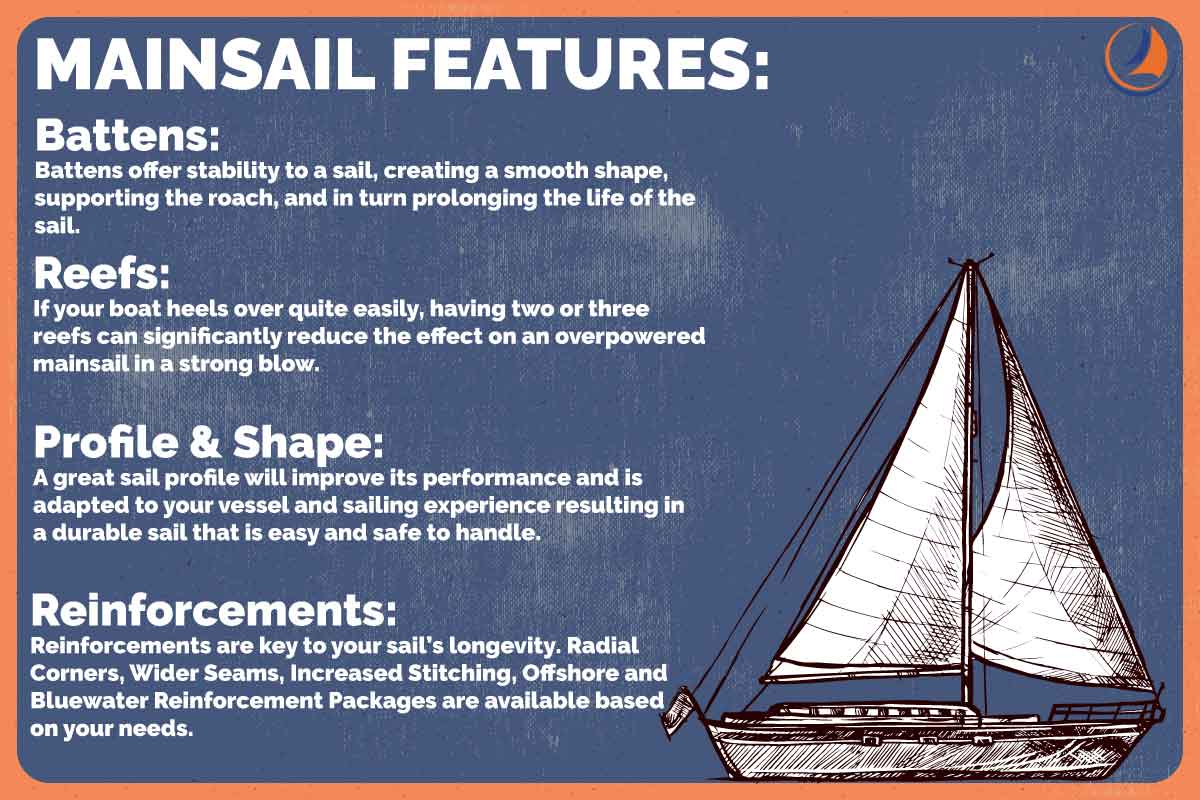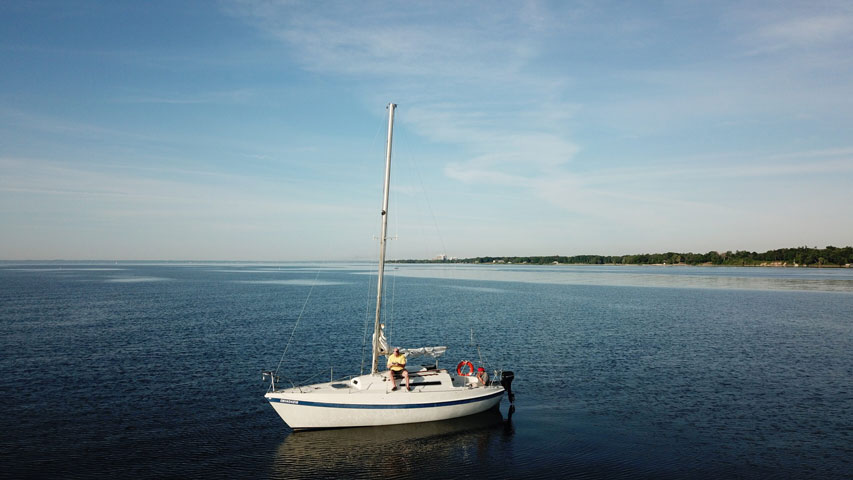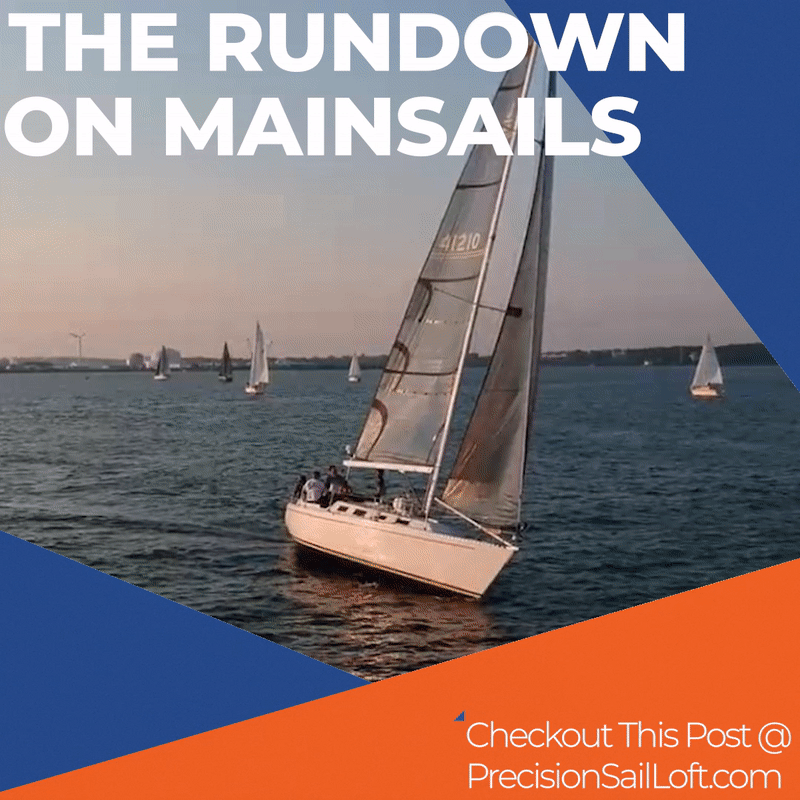
The Rundown On Mainsail Features
When selecting a new mainsail there is a huge range of sail-making technologies available to customize and tailor your new sail, much more so than just fancy sailcloth. A host of options exists for batten configurations, multiple reef points, stitching, luff attachments, radial or block reinforcements, numerous line and cleat options for leech and foot lines… the list goes on!
Today, we will be looking at four key features to consider when selecting your new mainsail:
Size & Profile
While there is minimal room for alterations in the size of your mainsail due to the existing rigging, your sailmaker will be able to give some suggestions for features that can be included in the overall profile of the sail, based on its intended use. Whether you’re a coastal cruiser, a club racer, or planning your next ocean voyage, professional advice on the intricacies of your sail’s profile will not only improve its performance but will ensure a durable sail that is easy and safe to use as well as being perfectly adapted to your vessel and sailing experience.
One of the most critical aspects of a sail’s profile is the roach. The roach is located at the part of the sail which generates lift when sailing upwind, already making it very important. In addition to that, more roach means more sail area, and therefore, an aggressive roach will improve a sail’s performance both up and downwind. The limiting factor for roach on most boats would be the location of your backstay, unless you plan on replacing your sail annually, it will need to clear the backstay. Sails with a larger roach will interfere with the backstay when tacking, causing chafe damage over time.
Spreader patches can be used to help prevent chafe damage from the rigging. We have put a handy guide together on installing spreader patches for you to use.
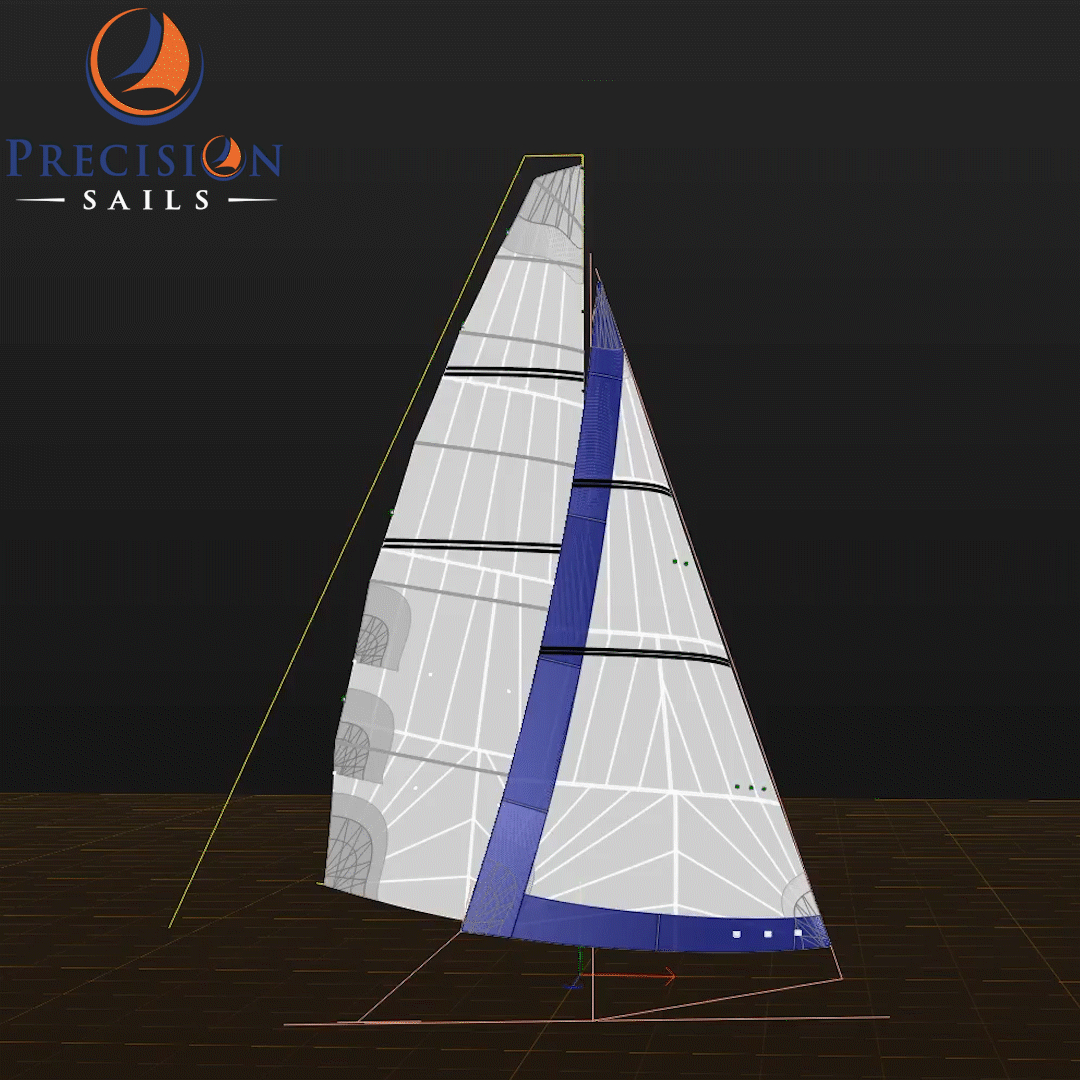
A Mainsail And Headsail Design. The Yellow Line Marks The Back-stay Location
Battens
There are options to have partially battened mainsail, a fully battened mainsail, or a combination of both. Battens offer stability to a sail, creating a smooth shape, supporting the roach, and in turn prolonging the life of the sail. With full-length battens stretching from luff to leech, there is less likelihood of the sail becoming flogged when tacking and reefing, therefore, reducing the wear and tear on the fabric over time. Full-length battens also make it far easier when using a lazy jack system, as they allow the rigid sail to have support along its entire length and therefore can fall effortlessly into the sail bag.
Batten length is a hotly debated topic and there are sound arguments for shorter battens alternately. Some find full-length battens add compression on the luff hardware, creating friction and making it difficult to raise and lower the sail when it’s not in perfect alignment. Others dislike the constant stiff shape of full-battens as they can chafe against the rigging when sailing downwind, damaging the batten pockets. Some prefer partially battened mainsails or a combination of both as it gives more control back to the sailor to create the best shape by trimming rather than relying on the full-length battens to force the shape.
You can read more about full battens vs partial battens and two-by-two configurations in a prior post.
We also have put a informative blog together on installing a lazy-jack bag system.
Reefs
Reefing points (or reefs) are pairs of metal grommets pressed into a mainsail, their purpose is to serve as temporary tack and clew points when a sail’s area must be reduced to avoid overpowering. The quantity and distance between reefs on a mainsail will be completely dependent on your boat and the conditions you plan to embark on. For those happy taking short day trips in mild weather conditions, one or two reefing points should be more than adequate. For those looking to do ocean crossings and run the risk of tackling severe weather conditions, two or more reef points will be needed. Similarly, if your boat heels over quite easily, having two or three reefs can significantly reduce an overpowered mainsail in a strong blow.
Reef dimension should be considered with the overall design of your boat. Boat builders often use a particular reef size in order to keep your boat’s center of effort balanced, just another example of why it is best to consult your owner’s manual as well as a sail consultant before making your selection. There is room for personal preference though too. If, for example, you are a coastal cruiser you might prefer a deeper first reef in order to reduce your sail area quickly for the overall comfort aboard. A club racer, on the other hand, might prefer smaller reef points so they can fine-tune the amount of sail, maximizing performance. Reef locations can be customized to whatever your needs are during the design process.
Sailing Uma has produced a great video on their reefing system. You can check out that video in our Reefing 101: How To Reef And When To Do It post.
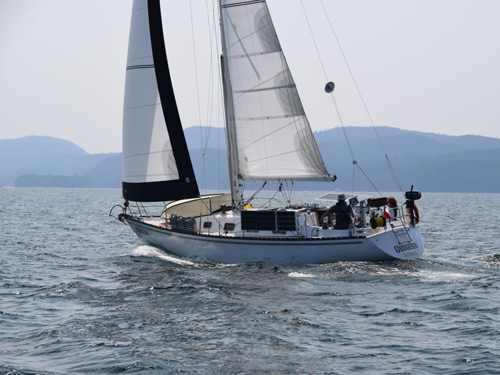
S.V. Gudgeon. Note The Two Reefing Points On This Cruising Mainsail
Reinforcements
Reinforcements and materials are key to your sail’s longevity and customizing these features to your intended use are critical. For those looking to cross oceans, larger and more durable corner patches will help to spread the load across the sail. Additional reinforcements could include double tapes on the outer edges of the sail, wider seams, more rows of stitching, leech seam wedgies, double-ply layers on the corners, reef and eyelet patches as well as reef reinforcement belts to strengthen your reef points and the foot of the sail when reefed. For fair weather lake sailors, a basic block reinforced corner will suffice. Radial reinforced corners are an excellent middle-ground upgrade, as they have near double the number of sailcloth layers at the corner, increasing the strength and durability, without any premature material failure.
Darryl recently did a video where he talked about the Offshore/Blue-water Reinforcement Package, check it out here.
Final Words
Ultimately, a mainsail is a lot like a tailored suit; unique to you. And just like a tailored suit, you leave it to the professionals to do what they do best. At Precision Sails, we make the selection process easy, by speaking to you directly, to help determine exactly what you need from your next sail.
